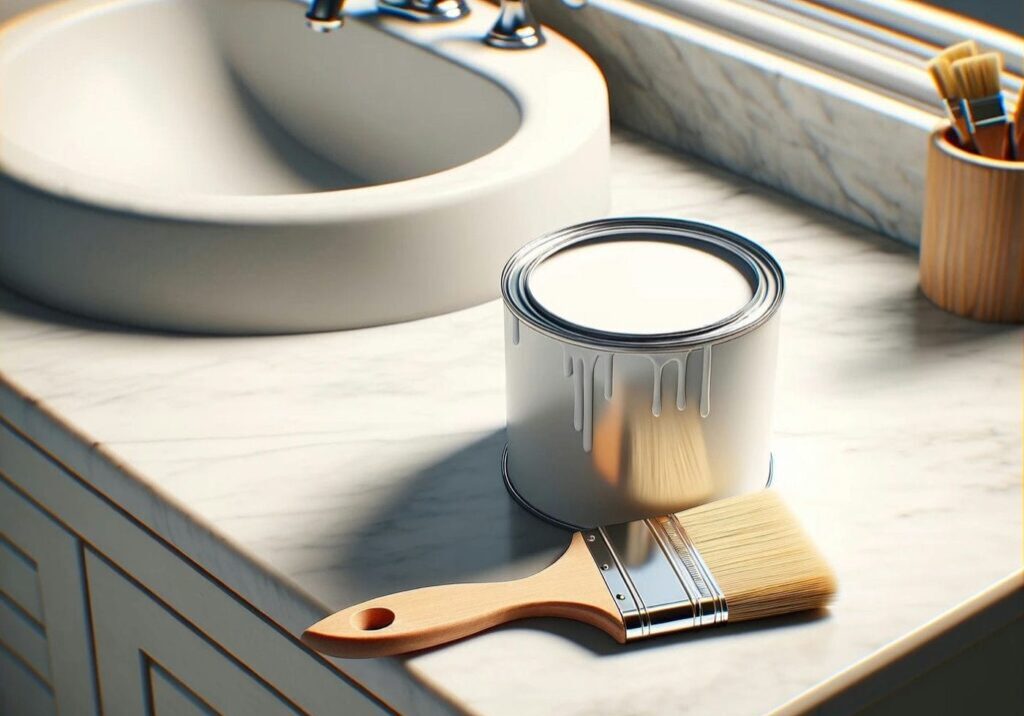Choosing the Right Paint Type for Bathrooms

When it comes to renovating your bathroom, one of the most significant yet often overlooked decisions is choosing the right paint type. The bathroom, with its unique environment characterized by high humidity and fluctuating temperatures, demands more than just an aesthetic choice of color; it requires a paint that can withstand these challenging conditions without losing its appeal over time. In this post, we’ll delve into the essentials of selecting the ideal paint type for your bathroom, ensuring both durability and beauty in your renovation project.
Understanding Bathroom Conditions
Bathrooms are unique in their environmental conditions. They are frequently exposed to high levels of humidity and moisture, especially during and after showers or baths. This constant exposure to water can lead to issues like peeling paint, mold, and mildew growth if the wrong type of paint is used. Additionally, bathrooms often experience significant temperature fluctuations, which can further stress paint surfaces.
These conditions make it imperative to choose a paint type that’s specifically designed to handle moisture and temperature changes. The ideal bathroom paint should have a durable, moisture-resistant formula that prevents water penetration and allows for easy cleaning and maintenance. Understanding these specific challenges is the first step in making an informed decision about the best paint for your bathroom renovation.
Types of Paint Suitable for Bathrooms
When selecting paint for your bathroom, it’s crucial to choose a type that not only complements your design but also withstands the unique conditions of the space. Let’s explore the most suitable types of paint for bathrooms, each with its own set of benefits and considerations.
Semi-Gloss and High-Gloss Paint
- Characteristics: Semi-gloss and high-gloss paints are known for their sheen, which reflects light and gives a shiny appearance. This sheen is not just for aesthetics; it plays a functional role too.
- Benefits: The slick surface of glossier paints is less porous, making it more resistant to moisture – a vital feature in a bathroom. They are also easier to clean, which is essential for areas prone to splatter and stains.
- Considerations: While excellent for moisture resistance, glossy paints can highlight imperfections on your walls. They are best used on smooth, well-prepared surfaces.
Satin Paint
- Characteristics: Satin paint strikes a balance between matte and glossy finishes, offering a subtle sheen.
- Benefits: It’s less reflective than semi-gloss or high-gloss, providing a more understated elegance. Satin is relatively easy to clean and can handle moisture well, making it a practical choice for bathrooms.
- Considerations: Satin paint can reveal application flaws, such as brush or roller strokes, so careful application is necessary.
Mildew-Resistant Paint
- Characteristics: Some paints are specifically formulated to resist mildew growth, a common problem in damp bathroom environments.
- Benefits: These paints contain additives that inhibit the growth of mold and mildew on the paint surface, helping to keep your bathroom walls clean and healthy over time.
- Considerations: While mildew-resistant paints are highly effective in damp environments, they should still be used in conjunction with good ventilation practices.
Choosing the Right Finish
The finish of your paint can dramatically affect the overall look and feel of your bathroom. Here’s a quick guide to help you choose:
- For High-Moisture Areas: In shower areas or walls frequently splashed with water, a semi-gloss or high-gloss finish is recommended for its moisture resistance and ease of cleaning.
- For General Walls: Satin finishes are suitable for general bathroom walls, offering a balance of washability and subdued elegance.
- For Ceilings: You might opt for a less reflective finish on the ceiling, such as a satin or even a matte finish, depending on the moisture level.
Durability and Ease of Cleaning
In a bathroom, the ease of cleaning your walls is as important as the paint’s aesthetic appeal. Glossy finishes are generally easier to clean and more resistant to the wear and tear of frequent cleaning, making them a practical choice for family bathrooms or those with high usage.
In conclusion, selecting the right paint type for your bathroom is a balance between functional needs and personal style. Semi-gloss and high-gloss paints offer high moisture resistance and are easy to clean, making them ideal for high-moisture areas. Satin paint, with its subtle sheen, is a good all-around choice for general bathroom walls, while mildew-resistant paints add an extra layer of protection in damp environments. Consider the specific conditions and usage of your bathroom to make the best choice for a long-lasting, beautiful finish.
Color Choices for Bathroom Paint
The color you choose for your bathroom paint plays a crucial role in setting the atmosphere and aesthetic of the space. Different colors can have varied psychological effects; for instance, shades of blue and green typically evoke a sense of tranquility and cleanliness, making them popular choices for bathrooms. Conversely, warmer tones like beige or soft pinks can create a more cozy and inviting atmosphere. It’s important to consider how color influences both mood and the perception of space. Lighter colors tend to make small bathrooms feel more spacious and open, whereas darker hues can add a sense of luxury but may make the space feel more confined.
When it comes to selecting a paint color, it’s essential to balance current trends with personal preference. Bathroom renovations are not frequent occurrences, so choosing a color that will stand the test of time is key. Neutral colors often offer a timeless quality, but it’s also important for your bathroom to reflect your personal style. Whether you are drawn to bold, vibrant colors or prefer more understated tones, the color should resonate with your personal taste.
The lighting in your bathroom also significantly impacts how paint colors are perceived. Bathrooms with ample natural light can accommodate darker or more vibrant colors, as the natural light helps to balance and soften the color’s impact. In contrast, bathrooms with limited natural light require careful consideration of artificial lighting types, as these can alter the appearance of paint colors. LED lights, for instance, can bring out the truest form of the paint color, while incandescent lighting can add a warmer tone.
Ultimately, the choice of bathroom paint color should create a harmonious blend of functionality, style, and personal comfort. By considering the psychological effects, lighting, and your personal preferences, you can select a color that not only looks beautiful but also enhances the overall bathroom experience.
Elevating Your Bathroom Space
In summary, the journey to a beautifully renovated bathroom involves several key decisions, particularly in choosing the right paint. From understanding the unique moisture and humidity challenges to selecting a paint type that balances durability with aesthetic appeal, each choice plays a crucial role in the success of your renovation project. We delved into the advantages of semi-gloss, high-gloss, and satin paints, highlighting their suitability for the bathroom environment. Additionally, the importance of color choice cannot be overstated. The right color can transform your bathroom, influencing both mood and the perception of space, while complementing your personal style and the bathroom’s lighting conditions.
Renovating a bathroom is an exciting venture, one that opens the door to a more functional and visually appealing space. If you’re considering a bathroom makeover and need expert guidance, Sultacon is here to assist. With our experience and expertise, we can help you navigate these important decisions, ensuring your bathroom renovation is a resounding success. We invite you to reach out to us; whether you prefer to fill out our online form or give us a call at (416) 433-4242, our team is ready to bring your dream bathroom to life. Let us help you create a space that not only meets your functional needs but also reflects your personal taste and style.




